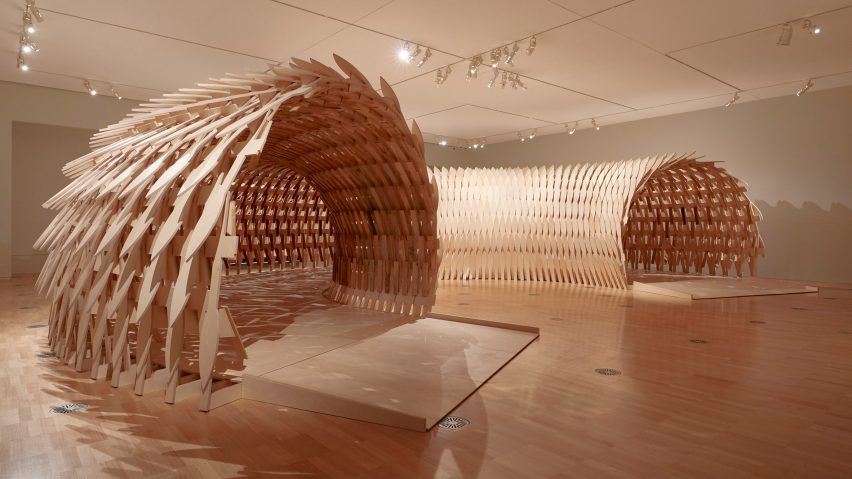
Kengo Kuma designs tessellated Botanical Pavilion as "tridimensional puzzle"
Japanese architect Kengo Kuma and Australian artist Geoff Nees have created a tactile, circular pavilion using timber collected from Melbourne's Royal Botanic Gardens.
Botanical Pavilion slots together like a puzzle without the need for metal supports.
Kuma and Nees's design was commissioned for the NGV Triennial in response to Korean artist Lee Ufan's 2017 painting named Dialogue.
The softly curving pavilion sits in front of the painting, framing it through its openings at both ends.
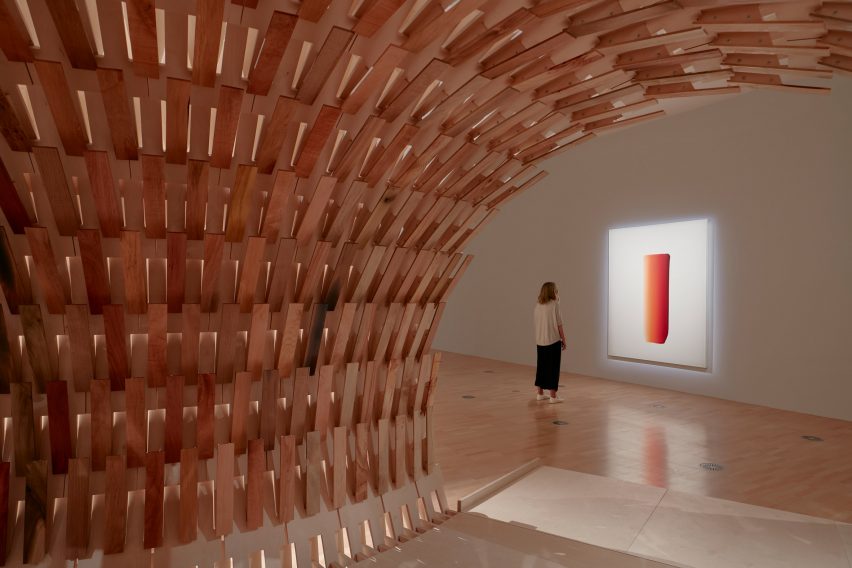
Botanical Pavilion was made in the Japanese tradition of wooden architecture and features the kind of organic shape that Kuma has often returned to.
"In nature most of the shapes are organic, and since the pavilions I make are made of natural materials such as wood, I think organic and curved shapes help to better connect and blend the architecture in the natural world," Kuma told Dezeen.
"Another reason comes from the fact that many of my installations are made by assembling smaller elements together to form larger structures."
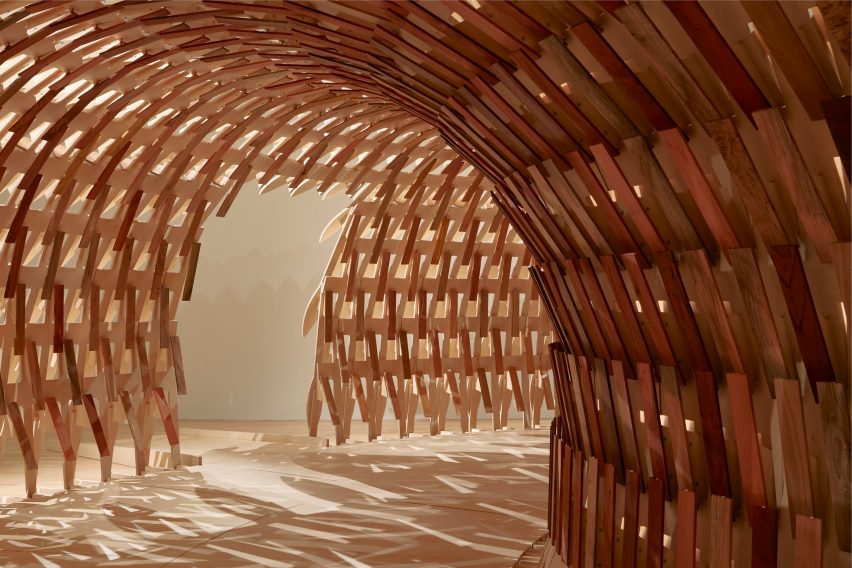
"Curved structures like arches and domes are the most efficient way of achieving a structure with minimum materials," he added.
The aim of the pavilion was to give new life to the "beautiful but unused wood" cut from the trees of Melbourne's Royal Botanical Gardens.
Kuma and Nees collected timber from trees that had been felled or removed over several years, some of which pre-date European settlement, and used it to create the tessellated pavilion.
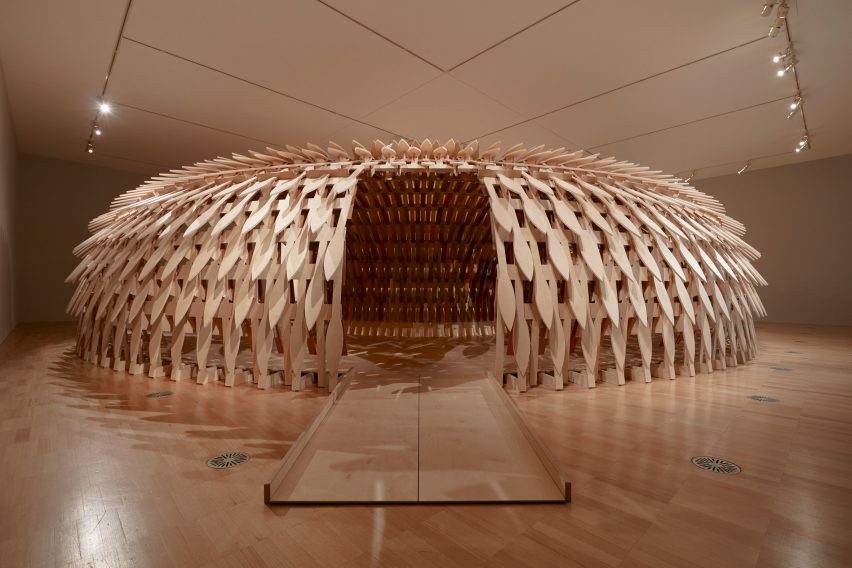
Kuma's approach to the design was derived from the Japanese carpentry tradition, in which you use smaller elements and rely on joinery to achieve larger spans.
"I thought of creating a circular wooden structural skin and then suspend the botanical timber in it," he said.
"The semi-circular shape of the pavilion invites the visitor into a journey to explore the space and experience the various essences of wood," Kuma added.
"The porous structure is assembled like a tridimensional puzzle without the use of metal connections to be able to reassemble it in a different location."
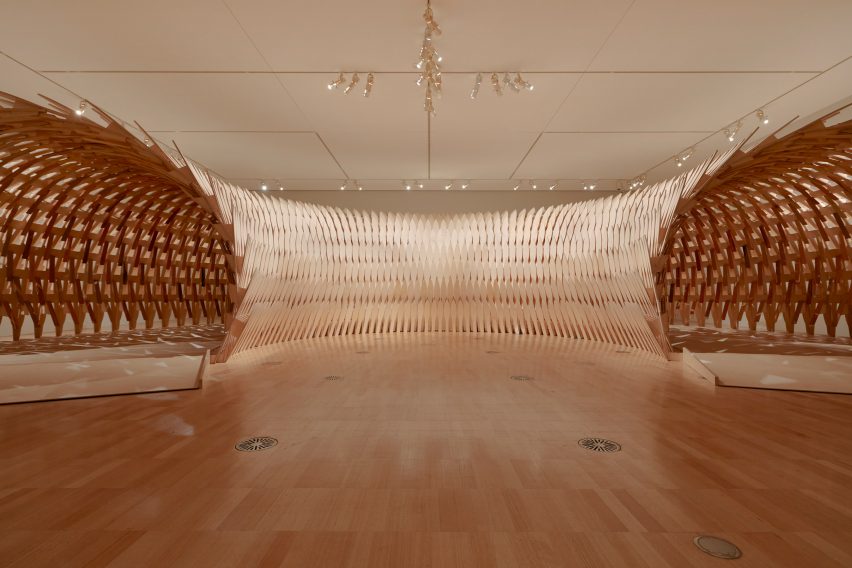
Traditionally, Japanese carpenters would use timber of different ages for different purposes.
"In a similar way the Botanical Pavilion, displaying the timber instead of burning it, aims to raise awareness to the beauty and quality of this material and the multiple uses it can have throughout its life cycle," Kuma explained.
While all the trees come from the same park, the architect used different species to construct the pavilion. These were sorted through colour coding.
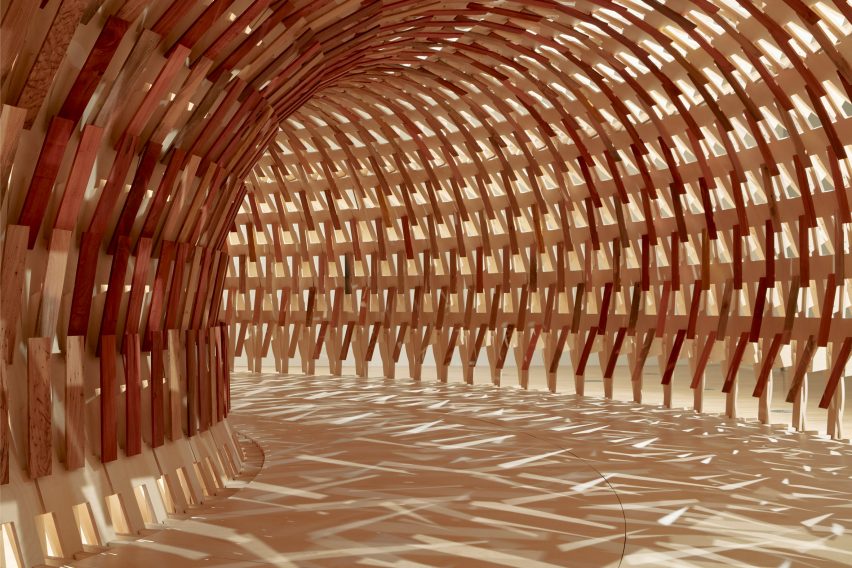
"The botanical species have their own unique properties and texture, the colour is their most visible property," Kuma said.
"We then catalogued the available botanical timber by colour and created a pattern that has a gradient from darker to lighter to accompany the visitors' journey through the pavilion; this will give a different perception of light and colour at every section of the pavilion."
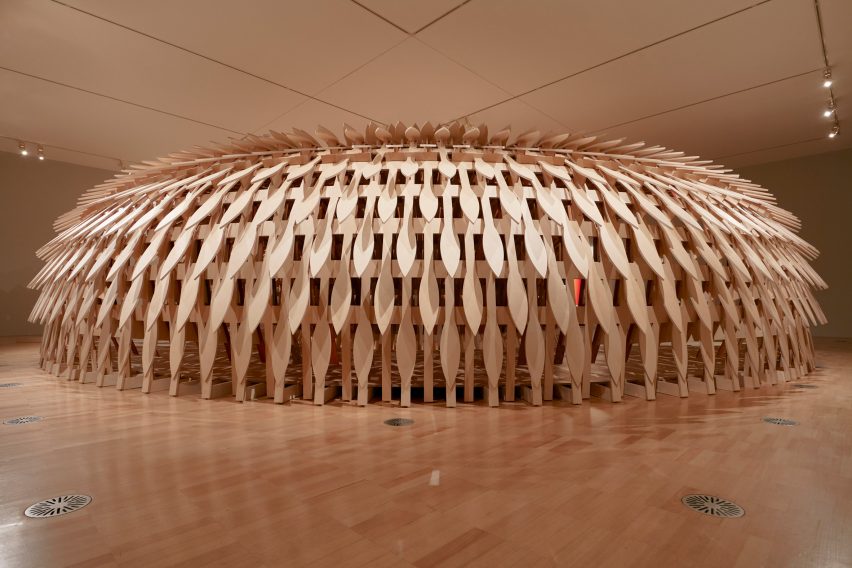
Other installations on show at the NGV Triennial include South African designer Porky Hefer's mutant sea creatures, designed to warn of ocean pollution, and British designer Alice Potts' face shields made from food waste.
Photography: Installation view of Kengo Kuma & Associates and Geoffrey Nees’s work Botanical Pavilion by Tom Ross.
Botanical Pavilion is on view at NGV International in Melbourne from 19 December 2020 to 18 April 2021. See Dezeen Events Guide for an up-to-date list of architecture and design events taking place around the world.